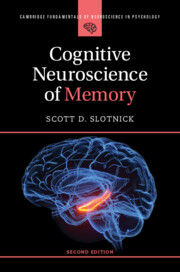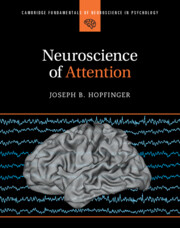Refine search
Actions for selected content:
399 results
Syntactic processing of Mandarin Chinese as a second language recruits a crucial frontoparietal network
-
- Journal:
- Bilingualism: Language and Cognition , First View
- Published online by Cambridge University Press:
- 13 August 2025, pp. 1-18
-
- Article
-
- You have access
- Open access
- HTML
- Export citation
Neurofunctional representations of instrumental learning in psychosis: a meta-analysis of neuroimaging studies
-
- Journal:
- Psychological Medicine / Volume 55 / 2025
- Published online by Cambridge University Press:
- 08 August 2025, e229
-
- Article
-
- You have access
- Open access
- HTML
- Export citation
Differential neural activity associated with emotion reactivity and regulation in young adults with non-suicidal self-injury
-
- Journal:
- BJPsych Open / Volume 11 / Issue 5 / September 2025
- Published online by Cambridge University Press:
- 01 August 2025, e163
-
- Article
-
- You have access
- Open access
- HTML
- Export citation
Odor increases synchronization of brain activity when watching emotional movies
-
- Journal:
- Journal of the International Neuropsychological Society , First View
- Published online by Cambridge University Press:
- 30 July 2025, pp. 1-11
-
- Article
-
- You have access
- Open access
- HTML
- Export citation
Exploring connectivity and volume alterations in the Pulvinar’s subnuclei: insights into the neuropathological role in obsessive-compulsive disorder (OCD)
-
- Journal:
- Psychological Medicine / Volume 55 / 2025
- Published online by Cambridge University Press:
- 21 July 2025, e206
-
- Article
-
- You have access
- Open access
- HTML
- Export citation
Brain network dynamics following induced acute stress: a neural marker of psychological vulnerability to real-life chronic stress
-
- Journal:
- Psychological Medicine / Volume 55 / 2025
- Published online by Cambridge University Press:
- 07 July 2025, e187
-
- Article
-
- You have access
- Open access
- HTML
- Export citation
Reading fiction in a foreign language reduces the neural synchronization between semantic and emotional areas
-
- Journal:
- Bilingualism: Language and Cognition , First View
- Published online by Cambridge University Press:
- 01 July 2025, pp. 1-12
-
- Article
-
- You have access
- Open access
- HTML
- Export citation

Cognitive Neuroscience of Memory
-
- Published online:
- 12 June 2025
- Print publication:
- 30 January 2025
-
- Textbook
- Export citation
5 - The Effects of Attention on Neural Processing
-
- Book:
- Neuroscience of Attention
- Published online:
- 02 May 2025
- Print publication:
- 22 May 2025, pp 123-166
-
- Chapter
- Export citation
7 - The Control of Attention
-
- Book:
- Neuroscience of Attention
- Published online:
- 02 May 2025
- Print publication:
- 22 May 2025, pp 213-272
-
- Chapter
- Export citation
3 - Investigating the Brain
-
- Book:
- Neuroscience of Attention
- Published online:
- 02 May 2025
- Print publication:
- 22 May 2025, pp 58-90
-
- Chapter
- Export citation
Brain-Reading Technologies and the Right Against Self-Incrimination: A Challenge for the Distinction Between Testimonial and Real Evidence
-
- Journal:
- German Law Journal ,
- Published online by Cambridge University Press:
- 16 May 2025, pp. 1-19
-
- Article
-
- You have access
- Open access
- HTML
- Export citation

Neuroscience of Attention
-
- Published online:
- 02 May 2025
- Print publication:
- 22 May 2025
-
- Textbook
- Export citation
Enhanced disgust generalization in obsessive–compulsive disorder is related to insula and putamen hyperactivity
-
- Journal:
- Psychological Medicine / Volume 55 / 2025
- Published online by Cambridge University Press:
- 14 April 2025, e116
-
- Article
-
- You have access
- Open access
- HTML
- Export citation
Examining the unique contribution of parent anxiety sensitivity on adolescent neural responses during an emotion regulation task
-
- Journal:
- Development and Psychopathology , First View
- Published online by Cambridge University Press:
- 10 April 2025, pp. 1-11
-
- Article
-
- You have access
- Open access
- HTML
- Export citation
Chapter Two - Methods of Cognitive Neuroscience
-
- Book:
- The Neuroscience of Language
- Published online:
- 17 April 2025
- Print publication:
- 10 April 2025, pp 16-41
-
- Chapter
- Export citation
Differential brain activations between Democrats and Republicans when considering food purchases
-
- Journal:
- Politics and the Life Sciences / Volume 44 / Issue 1 / Spring 2025
- Published online by Cambridge University Press:
- 28 March 2025, pp. 60-76
-
- Article
-
- You have access
- Open access
- HTML
- Export citation
Brain functional connectivity and anatomical features as predictors of cognitive behavioral therapy outcome for anxiety in youths
-
- Journal:
- Psychological Medicine / Volume 55 / 2025
- Published online by Cambridge University Press:
- 24 March 2025, e91
-
- Article
-
- You have access
- Open access
- HTML
- Export citation
Chapter 18 - Wetware
- from Part IV - Neurobiological Theories
-
- Book:
- Looking Ahead
- Published online:
- 20 March 2025
- Print publication:
- 06 March 2025, pp 201-207
-
- Chapter
- Export citation
Resting-state network alterations in depression: a comprehensive meta-analysis of functional connectivity
-
- Journal:
- Psychological Medicine / Volume 55 / 2025
- Published online by Cambridge University Press:
- 26 February 2025, e63
-
- Article
-
- You have access
- Open access
- HTML
- Export citation
